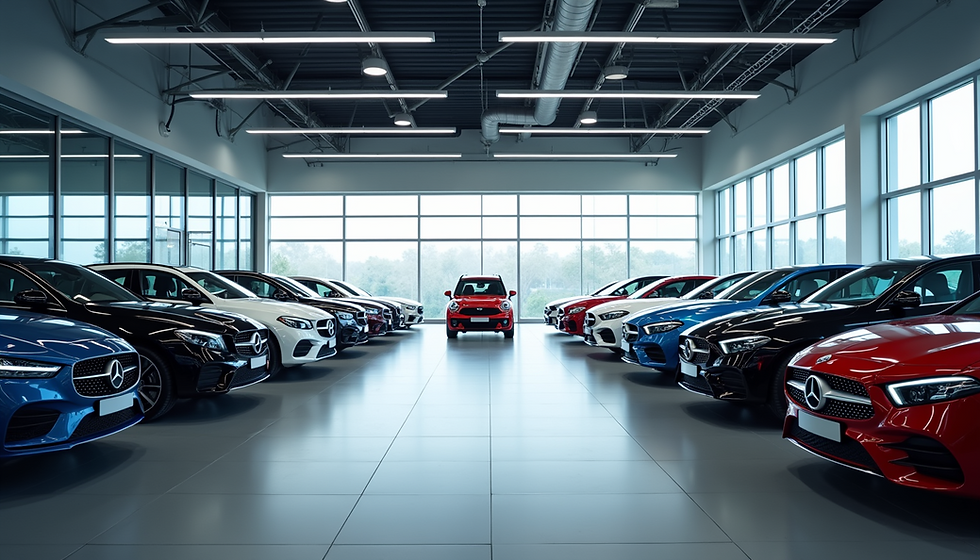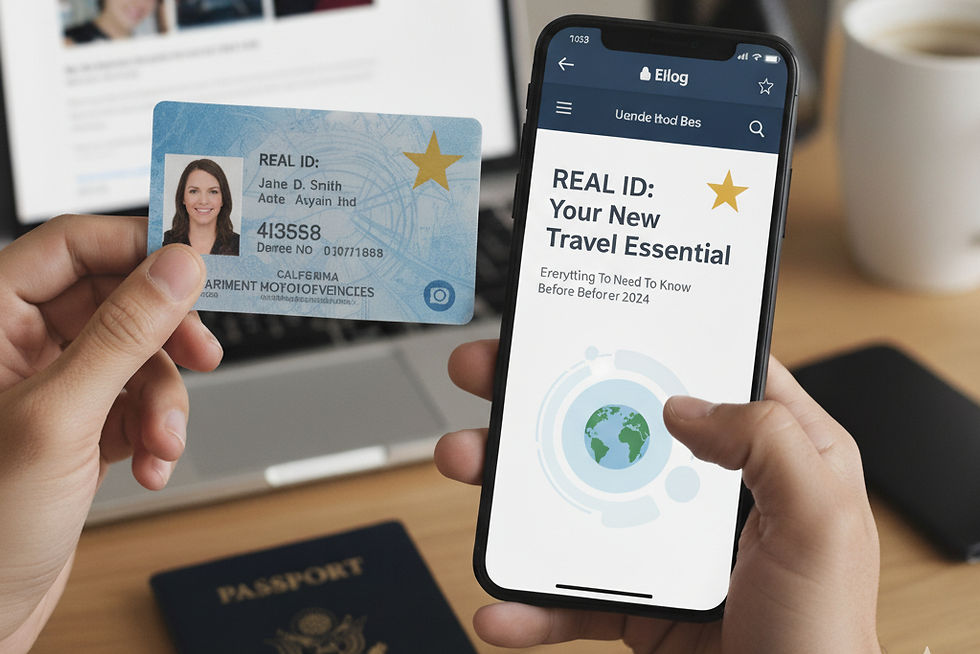How to Avoid Hitting Animals on the Road
- joseph retcho
- Apr 26, 2024
- 7 min read

Seeing a deer in your yard can be a pleasant surprise, but encountering one in the middle of the road can be a different story. According to the U.S. Department of Agriculture, there are about 1-2 million collisions with large animals each year in the United States, resulting in over $1 billion in damages. Whether you drive every day or just on weekends, it's important to know how your car insurance company handles accidents involving animals.
How Car Insurance Deals with Animal-Related Accidents
If you want coverage for an accident involving an animal, you'll need a full coverage car insurance policy. While "full coverage" isn't a standard term in the industry, it usually means having comprehensive and collision coverage in addition to the minimum required insurance in your state.
Having a full coverage policy doesn't automatically mean you won't have to pay for damages. The way you collide with an animal and whether the animal is someone's pet can affect how your insurance company responds and which coverage will apply. Some animal collisions may be covered by your comprehensive coverage, while others may require you to use the collision or liability parts of your car insurance policy.
Collision with an Animal
Picture this: a deer suddenly runs onto the road, you hit it, and your front bumper gets damaged. In this situation, your comprehensive coverage will likely cover the costs. This type of car insurance protects you financially from events that are out of your control, like vehicle theft, flood damage, falling objects, and animal collisions. While comprehensive coverage isn't mandatory by law, if you're financing or leasing your vehicle, your lender will probably require you to have it.
If this happens to you, you'll need to file a claim, pay your deductible, and let your insurer take care of the rest. It's important to note that comprehensive coverage is different from collision coverage. Collision coverage mainly covers damage from hitting another vehicle, a stationary object, or a building. Since hitting a deer or other large animal doesn't fall into these categories, it would be covered by your comprehensive coverage.
Swerving a collision with an animal
Imagine this: you're driving and suddenly a deer jumps out in front of your car. You swerve to avoid hitting it, but end up crashing into a fence. Who's at fault in this situation? Well, your insurance company will have to figure that out. They might say that since you chose to swerve, you're the one responsible for the accident. Even if you're not at fault, your insurance rates could go up after an accident like this. On average, at-fault accidents can increase your premiums by $840 per year.
If you slam on the brakes to avoid hitting an animal and someone rear-ends you, your insurer might still say you're at fault. It's not illegal to stop for an animal, but doing so suddenly could lead to an accident.
If your insurance company doesn't blame you for the accident, you can use your collision coverage to help pay for repairs. But remember, filing a claim could make your insurance more expensive in the long run. It's a good idea to get a repair estimate before deciding whether to file a claim or pay out of pocket.
Collision with your pet
So, if your furry friend gets in the way of your car, what happens? Well, from an insurance point of view, your pet is considered your personal property. This means that if you accidentally hit your own pet with your car, your insurance might not cover the vet bills. Property damage liability coverage usually only applies to damage done to someone else's property, not your own.
If your pet is injured while in the car during an accident, some insurance policies might cover them. But if your pet is outside the car and gets hurt, you'll likely have to foot the vet bills yourself.
Collision with someone else’s pet
If you hit someone else's pet with your car, things can get a bit tricky. Their pet is their property, just like your pet is yours. You might be able to use your property damage liability coverage to help with the vet bills, but it depends on the laws in your state. If the pet was off-leash, you might be able to argue that it wasn't your fault.
Risk of animal-vehicle collisions
Animal-vehicle collisions are more common than you might think. Remote roads and nighttime driving are especially risky, but it can happen anywhere. Studies show that about 1 in 20 reported vehicle accidents involve hitting an animal. With more drivers on the road and more animals around, the chances of hitting an animal have gone up by almost 50%.
Accidents involving wildlife
Did you know that in some states, almost 90 percent of wildlife-vehicle collisions involve deer, especially white-tailed deer? Getting into an accident with a deer can be really scary, and it can also be super expensive. Here's how much damage, on average, a deer collision can cause:
$2,510 in vehicle repairs
$3,900 in medical expenses
$80 in carcass removal expenses
The bigger the animal, the bigger the repair bill! The FHWA found that if you hit an elk, the average cost of vehicle repairs is around $4,000. And if you collide with a moose, get ready to shell out an average of $5,000 for repairs.
The size of the animal is not only important in determining the cost of the damage but also in how drivers react. It's much easier to maneuver around a smaller animal than it is to try to dodge a huge moose or elk. This could make it more likely for a collision to happen.
Areas most at risk of animal-vehicle collisions
Animal-vehicle collisions can happen anywhere, but some areas are more dangerous than others.
In Michigan, a collision with a deer occurs about every eight minutes.
Over 75,000 deer are killed in vehicle collisions in New York each year.
About 25 percent of animal vehicle collisions in Colorado involve wildlife.
The chances of hitting a deer in West Virginia are one in 38.
Main roads and highways have fewer animal collisions because of the high volume of traffic. Backroads, on the other hand, have less traffic, especially at night. Animals feel safer coming out onto these quieter roads, which can lead to dangerous situations with oncoming vehicles. Bright lights from cars can blind animals, causing them to panic and potentially causing accidents. The study found that in almost half of all wildlife collisions, drivers swerved to avoid the animal.
It's important to note that 89 percent of wildlife-vehicle collisions happen on two-lane roads. Most collisions occur on straight, dry roads under ideal conditions. The highest risk is during the spring and fall when animals are more active due to migration, mating, or hunting. Deer collisions are prevalent between October and December.
How to handle animals on the road
Some animal-vehicle collisions result in fatal injuries, so it's important to know what to do if you encounter an animal while driving.
Steps when encountering pets
Deer, moose, and elk aren't the only animals you might see on the road. Lost pets are also a common cause of animal-vehicle collisions. If you see a pet on the road, find a safe place to pull over. Speaking softly and calmly can help calm the pet down.
If you can't safely secure the animal, contact local authorities with the location of the animal. They can help retrieve the pet until the owner is found. Do not enter a busy road to retrieve a pet. However, if you can safely pull over, keep these items in your trunk to help secure a lost pet:
Carrier - A spare carrier can help you safely secure a lost pet.
Slip leashes - Quick and effective for securing an escaped pet.
Reflective vest - Ensures visibility, especially in hazardous conditions.
Treats - Helps entice frightened pets and build trust.
Blanket - Keeps the pet warm and protects your car.
Steps when encountering wildlife
If you encounter wildlife on the road, follow these steps to stay safe:
Slow down - Give yourself and the animal more time to react.
Make the animal aware - Use your headlights to startle the animal.
Use your horn - A honk can help the animal move out of the way.
Do not swerve - Stay on course to avoid a collision.
Steps to take after a collision with an animal
Even if you are a careful driver, accidents with animals can still happen. If you find yourself in this situation, here are some important steps to follow:
Pull over. If it is safe to do so, move your vehicle to a safe spot away from traffic. Turn on your hazard lights to alert other drivers.
Check for damages. Make sure everyone in the car is okay and assess the damage to your vehicle. Determine if it is safe to continue driving.
Call the police. The police may need to file a report for insurance purposes. They can also help with any injured animals and clear the road.
Contact a wildlife resource. Look for local organizations that can assist with injured animals in your area.
Document the incident. Take photos of the damage and the scene for insurance purposes.
Contact your insurance provider. Call your insurance company to report the incident and find out what steps to take next.
Tips to prevent animal-vehicle collisions
To avoid accidents with animals while driving, follow these tips:
Stay aware. Be extra cautious at dawn, dusk, and nighttime when animals are more active.
Slow down. Driving at a slower speed gives you more time to react if an animal crosses your path.
Follow posted signs. Pay attention to animal crossing signs and be alert in those areas.
Drive slowly. Lower speeds can help you react quickly to unexpected animal movements.
Authorities are working on ways to reduce animal-vehicle collisions, such as wildlife fencing and crossing structures. In places like Banff National Park in Canada, these measures have significantly decreased roadkill.




Comments